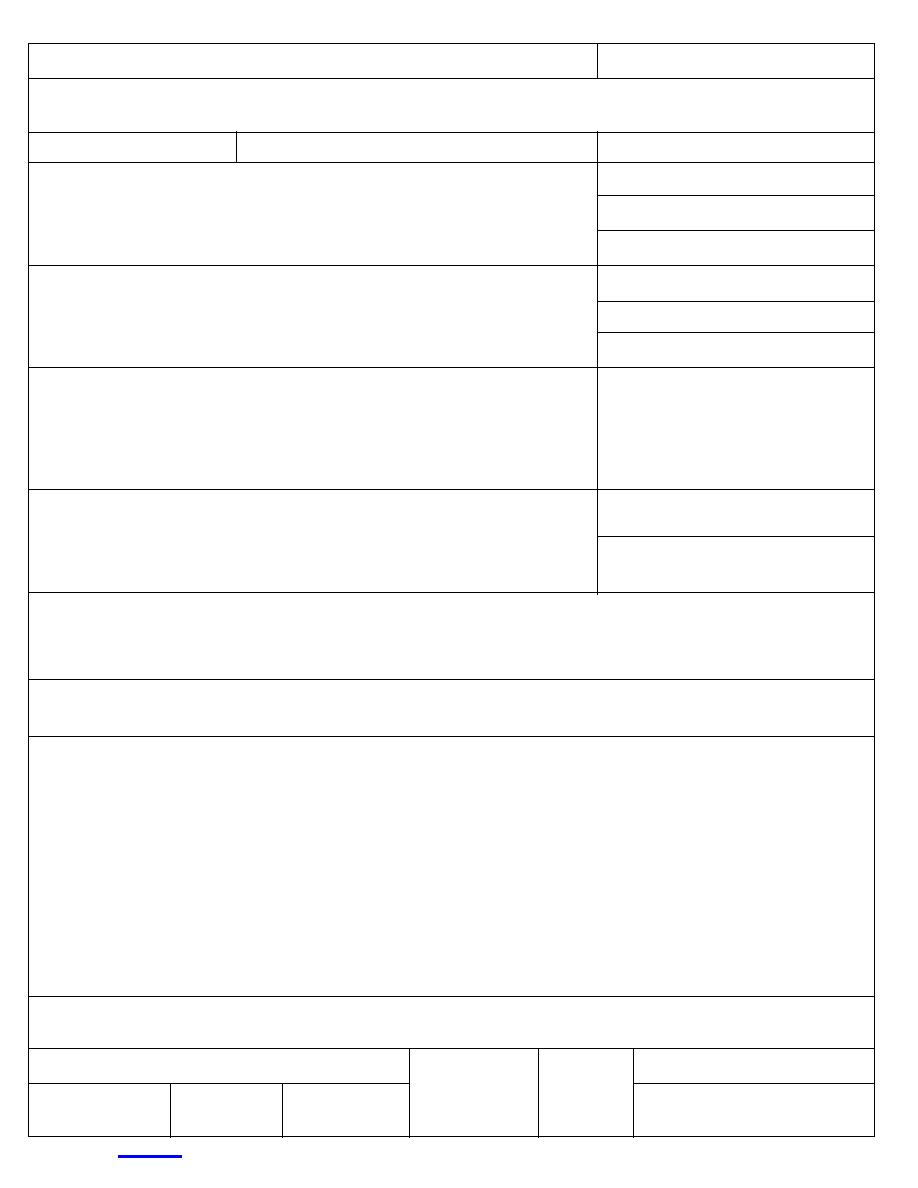
Form Approved
REPORT DOCUMENTATION PAGE
OMB No. 0704-0188
Public reporting burden for this collection of information is estimated to average 1 hour per response, including the time for reviewing instructions, searching existing data sources, gathering and maintaining the
data needed, and completing and reviewing this collection of information. Send comments regarding this burden estimate or any other aspect of this collection of information, including suggestions for reducing
this burden to Department of Defense, Washington Headquarters Services, Directorate for Information Operations and Reports (0704-0188), 1215 Jefferson Davis Highway, Suite 1204, Arlington, VA 22202-4302.
Respondents should be aware that notwithstanding any other provision of law, no person shall be subject to any penalty for failing to comply with a collection of information if it does not display a currently valid
OMB control number. PLEASE DO NOT RETURN YOUR FORM TO THE ABOVE ADDRESS.
1. REPORT DATE (DD-MM-YY)
2. REPORT TYPE
3. DATES COVERED (From - To)
August 2000
Technical Report
4. TITLE AND SUBTITLE
5a. CONTRACT NUMBER
5b. GRANT NUMBER
Evaluating the Use of Snow-Covered Ranges to Estimate the
Explosives Residues that Result from Detonation of Army Munitions
5c. PROGRAM ELEMENT NUMBER
6. AUTHOR(S)
5d. PROJECT NUMBER
5e. TASK NUMBER
Thomas F, Jenkins, Thomas A. Ranney, Marianne E. Walsh, Paul H. Miyares,
Alan D. Hewitt, and Nicholas H. Collins
5f. WORK UNIT NUMBER
7. PERFORMING ORGANIZATION NAME(S) AND ADDRESS(ES)
8. PERFORMING ORGANIZATION REPORT
NUMBER
U.S. Army Engineer Research and Development Center
Cold Regions Research and Engineering Laboratory
72 Lyme Road
ERDC/CRREL TR-00-15
Hanover, New Hampshire 03755-1290
9. SPONSORING/MONITORING AGENCY NAME(S) AND ADDRESS(ES)
10. SPONSOR / MONITOR'S ACRONYM(S)
w
Strategic Environmental Research and Development Program
11. SPONSOR / MONITOR'S REPORT
NUMBER(S)
12. DISTRIBUTION / AVAILABILITY STATEMENT
Approved for public release; distribution is unlimited.
Available from NTIS, Springfield, Virginia 22161.
13. SUPPLEMENTARY NOTES
14. ABSTRACT
. Estimating the amounts of residues remaining after munitions detonate is complicated by the presence of residues from previous
detonations and the difficulty in easily obtaining adequately sized samples to overcome spatial heterogeneity in residue deposition. This
study was conducted to assess the use of snow-covered ranges to provide these types of estimates. Specifically, two snow-covered ranges
were used to estimate the amount of explosives residues that result from detonation of individual mortar rounds. At Fort Drum, New York,
60-mm mortar rounds were fired, and at Camp Ethan Allen, Vermont, 81-mm mortar rounds were detonated by EOD personnel using C4
(RDX) and a blasting cap. The locations where residues were deposited were identified by the presence of soot from the detonation of
TNT on the surface of the otherwise clean snow. Large surface snow samples were collected with a snow shovel and the melted snow was
extracted and analyzed by gas chromatography with an electron capture detector (GC-ECD) and reversed-phase high performance liquid
chromatography (RP-HPLC). For both types of rounds, the main charge was Composition B (60% RDX and 39% TNT). The major
residues produced were RDX and nitroglycerine (NG), with lesser amounts of HMX and TNT. Surface concentrations ranged from as
high as 4430 g/m2 for RDX to less than 0.05 g/m2 for TNT, both at Camp Ethan Allen.
The major advantages of using snow-covered ranges were: 1) the snow cover provided an uncontaminated surface, unaffected by
15. SUBJECT TERMS
RDX
TNT
Gas chromatography
Detonations
Snow
Training ranges
NG
Explosives residues
16. SECURITY CLASSIFICATION OF:
17. LIMITATION OF
18. NUMBER
19a. NAME OF RESPONSIBLE PERSON
OF ABSTRACT
OF PAGES
a. REPORT
b. ABSTRACT
c. THIS PAGE
19b. TELEPHONE NUMBER (include area code)
U
U
U
U
13
Standard Form 298 (Rev. 8-98)
to contents
]Prescribed by ANSI Std. 239.18



 Previous Page
Previous Page
